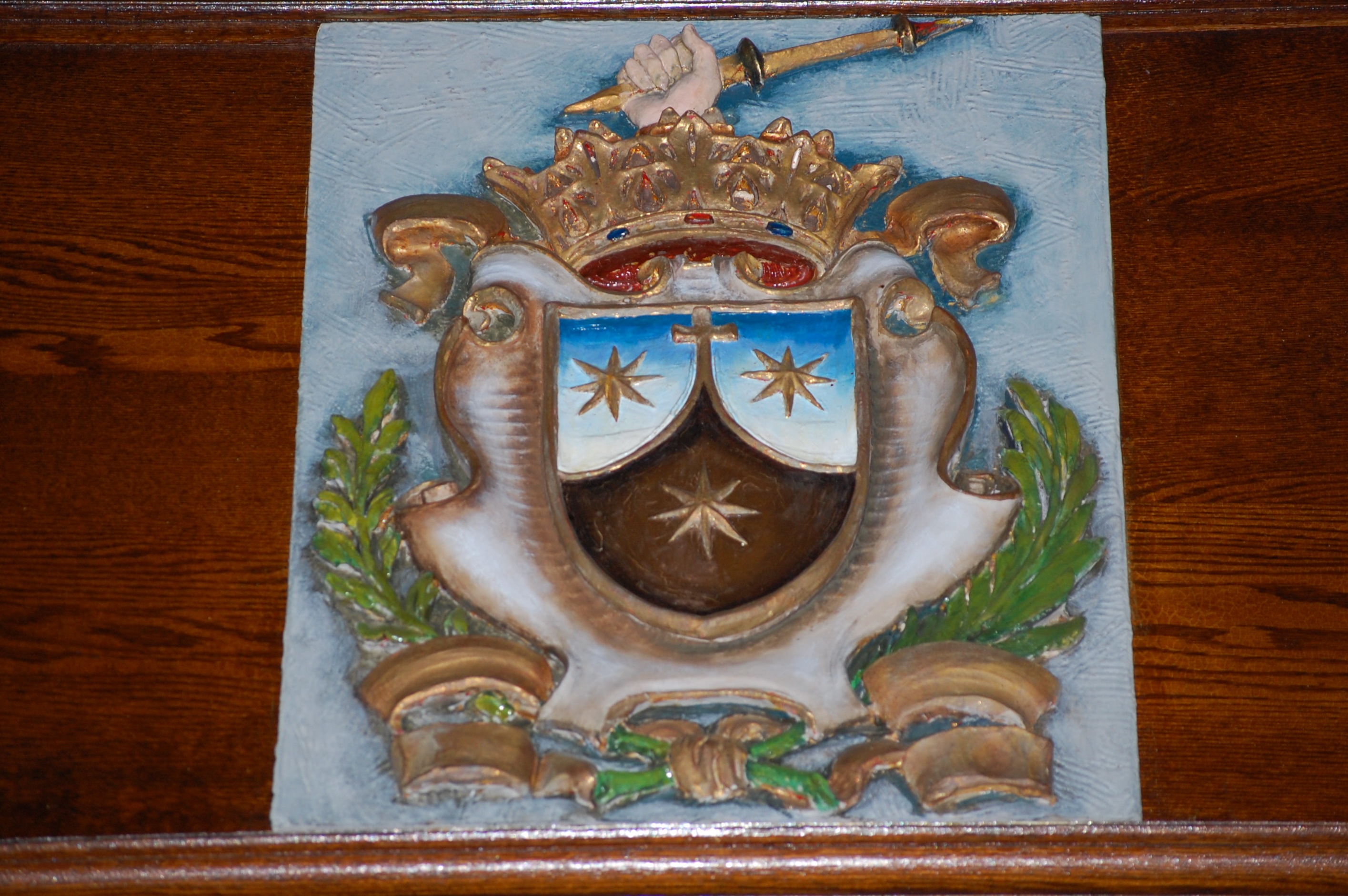Tags
Ascent of Mount Carmel, Carmelite Spirituality, Chapel of the Holy Spirit, Discalced Carmelites, Friends of Carmel, Philadelphia Carmel, Prayer, saints, soul, St. Albert, St. John of the Cross, Teresa of Avila, Teresa of Jesus, The Dark Night
I followed John of the Cross
and Teresa of Jesus
inside the Carmelite Monastery,
seeing their pleasant ways
I ran up the mountain’s
sacred path
seeking The Almighty God
reaching for the
Summit of Mt. Carmel.
– Shrinetower
I. Spiritual Guides: St. Teresa of Jesus and St. John of the Cross
Opening Prayer: Love and honor to Our Lady of Mt. Carmel, to Saint Joseph, Saint Anne, to our Holy Mother Saint Teresa, to our Holy Father Saint John of the Cross, whose powerful intercessions we invoke that the spirit of prayer, penance and apostolic zeal may flourish in the community. Amen
The Triumphal arch, with crucifix suspended, inspired by the crucifix of Fra Innocenzo de Palermo (1637) in the Church of San Damiano, Assisi. – Holy Spirit Chapel Sanctuary at Philadelphia Carmel. Photo courtesy of Friends of Carmel Pinterest.
The origins of Triumphal arch comes from the Roman era when captives were led under an arch to symbolize their submission to the authority of Rome. In later centuries the liturgical procession through the triumphal arch symbolizes Christians, as captives of Christ, being lead to the Kingdom of Heaven. The sacred space of the Sanctuary represents the Kingdom of Heaven.

The round medallion of Teresa of Jesus (Ávila) as she looks upward on the altar terra cotta wall over the cloister grilles of the Sanctuary. Her feast is celebrated by the Discalced Carmelite Order on October 15.
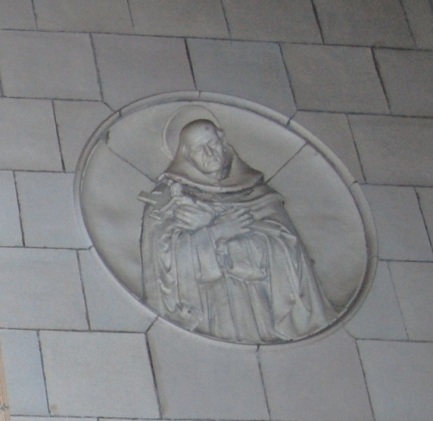
The round medallion of John of the Cross, with the Christ on the Cross in his arms on the altar terra cotta wall over the cloister grilles of the Sanctuary. His feast is celebrated by the Discalced Carmelite Order on December 14.
II. The Sanctuary Mosaic
The Sanctuary of the Holy Spirit Chapel; the heart, joy and beauty of Mount Carmel – Detail
From left to right, Teresa of Jesus; the sanctuary doors with the Cross; St. Elisha with hand reaching to the Lamb of God, reaching for the summit of Mt. Carmel; where the Prophet Elijah rides a chariot on the wings of a cloud. The Holy Spirit is in winged flight above St. Teresa who is in adoration of the Blessed Sacrament.
The images of the Sanctuary mosaic express the reality of divine love in the charism of Carmel. It is love revealed by God in the Old Testament and fulfilled in the New, a love that en-kindles our hearts and transforms them. Ultimately this transformation enables one to enter, body and soul into full union with God. Horizontal and spatial concepts of the mosaic echo passages of time in the Old and New Testament history of the Carmelite Order. – The Chapel of the Holy Spirit booklet, Mount Carmel Philadelphia
Symbolic images in the mosaic are:
Fire
Fire symbolizes divine love.
– St John of the Cross, Spiritual Canticle 39:14, St. Teresa of Jesus Life 30:20
Fire and Water
Oh, God help me, what marvels there are in this greater en-kindling of fire by water. The water does not impede the fire though it’s the fire’s contrary, but rather makes its fire increase! – St. Teresa of Jesus, The Way of Perfection 19:3
These lamps of fire are living waters of the spirit…although it is fire, it is also water.
– St. John of the Cross, The Living Flame of Love Stanza 3, #8
Chariot of Fire
in Christian art, St. Elijah is carried into heaven on a chariot of fire, a symbol of Christ’s Ascension. In the Dialogue of St. Catherine of Siena, Christ himself is referred to by the Father as a fiery chariot.
St. Elijah en-route to Heaven “You make the clouds your chariot, traveling on the wings of the wind. You make the winds your messengers, flaming fire your ministers.” Psalm 104:3-4
Elijah the Prophet is called the founder of the Carmelite ideal. There are two accounts of him being taken up to heaven in a fiery chariot (2 Kings 2:1-12 and Sirach 48:9). His feast is celebrated by the Carmelite Order on July 20.
The Holy Spirit (Dove)
The Holy Spirit is the third Person of the Blessed Trinity, the Sanctifier, the living Flame of Love. – Romans 5:5
St. Teresa of Jesus
St.Teresa of Jesus (1515-1582), the foundress of the reformed Carmel (Discalced Carmelites) is portrayed on the mosaic in Adoration of the Eucharist. In her spiritual writings one finds frequent images of fire and water. The Carmelites celebrate her memory on October 15.
The Lamb of God and the Eucharist
Fulfillment is found in Christ, the Alpha and Omega, the sacrificial lamb of god, who gave himself for the life of the world. His sacrifice is perpetuated in the Eucharist. From this divine reality the graces symbolized by the fire and the water are sought and obtained. Mt. 26;26-29; 1 John 5:6-8; Rev:5:6-14
St. Elisha (c. 840 BC) was the first disciple of St. Elijah. He was the leader of the prophets on Mt. Carmel. The Carmelite Order celebrates his memory on June 14.
Under the altar in Latin: Gloria Patri, et Filio, et Spiritui Sancto
meaning Glory [be] to the Father.
III. The Repository Doors

Between Elisha and Teresa of Jesus, with the Cross and triangle superimposed, are the bronze Repository Doors.

The Repository Doors Schematic Diagram. – from The Chapel of the Holy Spirit, Mount Carmel, Philadelphia (Booklet)
The symbols that are employed on the doors shows St. Teresa’s image of the Interior Castle, her guide to union with God. They are:
Door
“The door of entry to this castle is prayer and reflection.” – St. Teresa of Jesus, Interior Castle I:i,#7
Castle
The castle is the image of the soul: We consider our soul to be like a castle made entirely out of a diamond or of a very clear crystal in which there are many rooms, just as in heaven there are many dwelling places. – St. Teresa of Jesus, Interior Castle
The soul of the just person is nothing else than a paradise where the Lord says He finds His delight. I do not find anything comparable to the magnificent beauty of a soul and its marvelous capacity. – St. Teresa of Jesus, Interior Castle I:i, #1
Triangle
The triangle is the symbol of the Most Holy Trinity dwelling in the center of the soul.
 The soul of the just person is a paradise where the Lord says He finds His delight. – St. Teresa, Interior Castle
The soul of the just person is a paradise where the Lord says He finds His delight. – St. Teresa, Interior Castle
Cross
The Cross is the symbol of the Paschal Mystery of Christ’s passion, Death and Resurrection.
Blood and Water
Blood and water flowed out of our Redeemer on the Cross. The Doctors of the Church interpret this to mean that from the pierced Heart of the Son, God the Father pours out through the Holy Spirit, the saving graces of the Church’s Sacraments.
Then the angel showed me the river of life, rising from the throne of God and of the Lamb and flowing crystal clear down the middle of the city street. – Revelation 22:1-2
Jesus Christ who came by water and blood, not with water only, but with water and blood. – 1 John 5:6
Center Room of the Castle
The castle has many dwelling places. Located at the center, is the abode of the most Blessed Trinity: the Father, the Son, and the Holy Spirit.
 Shell
Shell
The shell is a symbol of Baptism, the sacrament of initiation to the divine life.
IV. Blessed Virgin Mary
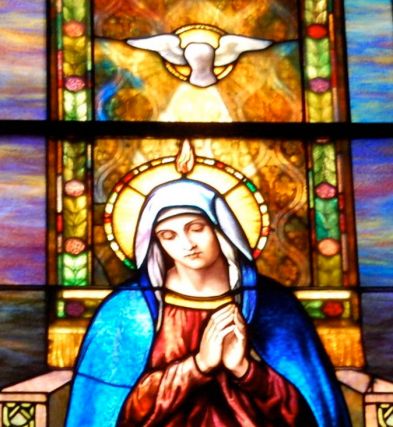
Discalced Carmelites are known for their deep devotion to Our Lady of Mount Carmel.
The Blessed Virgin Mary, dwells with the Holy Trinity in the most profound union, supreme above all creatures, beloved Daughter of the Father, mother of the Son, Spouse of the Holy Spirit Mediatrix of all Graces. – Mt. Carmel prayer
V. Seal of Mount Carmel (Coat of Arms)
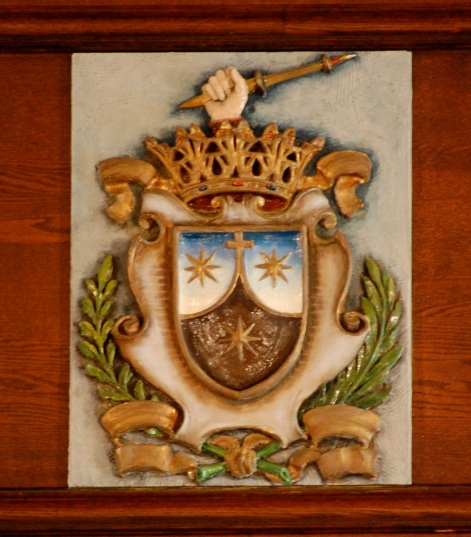 Discalced Carmelite Order (OCD) Coat of Arms plaque, located on balcony in front of Hook and Hastings organ at the Holy Spirit Chapel, Philadelphia Carmel.
Discalced Carmelite Order (OCD) Coat of Arms plaque, located on balcony in front of Hook and Hastings organ at the Holy Spirit Chapel, Philadelphia Carmel.

Coat of Arms plaque in context within Holy Spirit Chapel.
The coat of arms is a roadmap to the background and religious beliefs of the Discalced Carmelite Order. There are multiple levels of meaning and symbolism of the Seal of Mount Carmel acquired over the centuries.
The Shield of Carmel
In the center of the seal is Mount Carmel, cradle of the Carmelite Order, and the star in the mountain refers to the Our Lady of Mount Carmel. The two stars above are the prophets Elijah and Elisha.
Mount Carmel is the Carmelite’s place of origin located in modern day Haifa, Israel. In the 9th century BC the prophet Elijah lived there and had a profound experience of God. In that same place in the early 12th century some hermits, inspired by the memory of Elijah, gathered there, with a desire “to live a life of allegiance to Jesus Christ” (Rule of St. Albert).
 The cross on the summit of the mountain was added in the 16th Century by St. John of the Cross as a distinctive mark of the Discalced Carmelites (OCD) branch of the Carmelites. There is no cross for the Order of Carmelites. (O.Carm.)
The cross on the summit of the mountain was added in the 16th Century by St. John of the Cross as a distinctive mark of the Discalced Carmelites (OCD) branch of the Carmelites. There is no cross for the Order of Carmelites. (O.Carm.)
The colors are the brown of the mountain and the white of the skies. Brown is the color of earth. White is the reflection of light. It is the color associated with the tunic of Christ at the resurrection, the transfiguration.
On this particular shield, there are three, eight pointed stars. The number three has numerous symbolic meanings; the Triune God in unity of three divine persons: Father, Son and the Holy Spirit; the three virtues of faith, hope and love; and three monastic vows of poverty, chastity and obedience.
The three stars also represent the three great epochs in the history of Carmel; the first, or prophetic era, represented by the star inside the mountain, denotes the time of the prophet Elijah to the time of St. John the Baptist; the second indicates the era of those hermits living on Mount Carmel before the arrival of the Latin Crusaders; and the third signifies the present epoch spanning from the first Carmelite community living under the Rule of St. Albert until the end of time.
A deeper meaning of the stars is that they stand as a remembrance to the members of the Carmelite order. The star inside the mountain represents the Carmelites who are still on their way to the Summit of Mount Carmel (Heaven), the other two stars in the sky represent all the Carmelites who have gone before us and have reached the goal of their life’s vocation; union with God in love in the eternal Joy of Heaven.
– from Croatian Carmel Province
The Crown of the King

Placed atop the shield is a ducal crown and an arm wielding a fiery sword, representing the prophet Elijah.
The golden crown represents the Kingdom of God on earth, present through “Emmanuel,” “God with us,” Jesus Christ. Carmelites endeavor to serve God faithfully with “a pure heart and a steadfast conscience” (Rule of St. Albert). They understand their vocation to be a call to rooting and strengthening Christ’s Kingdom of self-sacrificing love and goodness in the world. In their service to this King they take their inspiration from the Blessed Virgin Mary, whose patronage they enjoy, and Saints Teresa of Jesus and John of the Cross, the great reformers of Carmel.
The Sword of The Spirit
Over the crown is an arm and hand brandishing a flaming sword, signifying the fiery spirit of Elijah. Burning with zeal for the Lord “burned like a torch” (Eccl. 48:1).
For Carmelites, Elijah is the solitary prophet who nurtured his thirst for the one and only God and lived forever in His presence. Elijah is the biblical inspiration of the Carmelite life and, like him, Carmelites seek both to continually carry in their minds and hearts “the sword of the spirit, which is the Word of God” (Rule of St. Albert) and to live constantly with a loving, contemplative awareness of His presence.
– Discalced Carmelite Friars, Washington Province of the Immaculate Heart of Mary

Another rendition of the Discalced Carmelite Order (OCD) Coat of Arms at Philadelphia Carmel, in the stained glass window of the Prophet Elijah.
Halo of Stars
In this stained glass window, the halo of twelve stars above the crown represents the prerogative of every Carmelite’s acclaim – the Blessed Virgin Mary, whom St. John saw in an apocalyptic vision as: “a woman clothed with the sun… on her head a crown of twelve stars” (Rev 12:1).
In the coat of arms of the Discalced Carmelites these stars also signify the twelve points of the rule, which are: Obedience, Chastity, Poverty, Recollection, Mental Prayer, The Divine Office, Chapter, Abstinence from meat, Manual Labor, Silence, Humility and Supererogation. (defined as those works or good deeds performed by saints over and above what is required for their own salvation, the merit of which is held to be transferable to others in need of indulgence). – Discalced Carmelite Friars, Washington Province of the Immaculate Heart of Mary
Also shown on this particular Philadelphia Carmel shield or seal, is the Latin legend referring to the Prophet Elijah’s phrase: “Zelo zelatus sum pro Domino Deo exercitum,” which translated means: “With zeal have I been zealous for the Lord God of hosts.”
This is not present on the Coat of Arms plaque but present in this stained glass window and at the portico entrance to the Holy Spirit Chapel.
Coat of Arms Sources: Philadelphia Carmel Monastery
Discalced Carmelite of the Australia-Oceania Region
Croatian Carmel Province
Discalced Carmelite Friars, Washington Province of the Immaculate Heart of Mary
VI. St. Albert and the Carmelite Rule

St. Albert of Trapani (1250-1307), from Sicily, at Philadelphia Carmel.
St. Albert wrote the Rule for hermits living in the spirit of Elijah near the prophet’s spring on Mount Carmel near present-day Israel.
Teresa of Jesus and John of the Cross would have both prayed to St. Albert for intersessions. He was one of the first saints of the order to be venerated. He is represented here with a lily, a symbol of purity and an urn for water he had blessed. Water is still blessed with his relics and the Carmel and is used for healing the sick.
– The Chapel of the Holy Spirit booklet, Mount Carmel, Philadelphia
VII. Hearing God in Silence

The Great Spiritual Silence. Listening, loving, believing, preserving.
And He said to them, “Come away by yourselves to a secluded place and rest a while.” Mark 6:31
The Apostle would have us keep silence, for in silence he tells us to work. As the Prophet also makes known to us: Silence is the way to foster holiness. Elsewhere he says: Your strength will lie in silence and hope … be careful not to indulge in a great deal of talk, for as Scripture has it – and experience teaches us – Sin will not be wanting where there is much talk, and He who is careless in speech will come to harm; and elsewhere: The use of many words brings harm to the speaker’s soul. – Carmelite Rule of St. Albert, [21a]
 Angel on guard in praying stance. Inside the Holy Spirit Chapel, Philadelphia Carmel.
Angel on guard in praying stance. Inside the Holy Spirit Chapel, Philadelphia Carmel.
And our Lord says in the Gospel: Every rash word uttered will have to be accounted for on judgment day. Make a balance then, each of you, to weigh his words in; keep a tight rein on your mouths, lest you should stumble and fall in speech, and your fall be irreparable and prove mortal. Like the Prophet, watch your step lest your tongue give offense, and employ every care in keeping silent, which is the way to foster holiness. – Carmelite Rule of St. Albert, [21b]
Life on Mount Carmel: Contemplation and Prayer
Carmelite spirituality proposes silence and solitude as necessary prerequisites for prayer and contemplation. Silence refers not only to external noise but also to the stilling of one’s internal noises. Silence is the condition for listening attentively to the still small voice of God. Solitude provides the ambiance where one may be alone so as to focus more attentively on the Beloved. Solitude then is not primarily separation or isolation from others, but a place of privileged encounter with the Beloved. – Carmelite Spirituality, Discalced Carmelite of the Australia-Oceania Region
Teresa of Jesus and John of the Cross, speak of prayer and contemplation as ‘friendship with God’ and ‘union with God’ respectively.
– Carmelite Spirituality, Discalced Carmelite of the Australia-Oceania Region
Breviary of St. Therese of Jesus on display at the Museo Ferias, Spain in 2014.
The soul does not use words. Is surrounds words with space, and that is what I mean by silence” – Richard Rohr, Silent Compassion
In order to foster and facilitate relationship with God, through prayer and contemplation, Carmelite spirituality proposes certain means, both personal and communal, namely meditation on the word of God, liturgy, silence and solitude, and asceticism (avoidance of indulgence). The Rule of St. Albert urges an unceasing pondering of the Law of the Lord in Scripture and the strengthening of one’s heart with holy thoughts, so that the word of God may abound in one’s heart and lips, and guide all one’s actions. Carmelite Spirituality, Discalced Carmelite of the Australia-Oceania Region
Asceticism is the means of freeing self from the tyranny of self-will, simplifying one’s life, and preserving all of one’s energy for journeying to God. For St. John of the Cross, the main expression of asceticism involves a radical detachment from inordinate or disordered desires and appetites. Detachment is a way of prioritizing God above all creatures. As such, it witnesses to the primacy and all sufficiency of God. Asceticism is not only at the service of a deeper life with God, but it is also geared to the demands of the apostolic ministry. – Carmelite Spirituality, Discalced Carmelite of the Australia-Oceania Region
Holy Spirit Chapel, side aisle, Philadelphia Carmel. Holy Spirit is principle guide in spiritual life. Photo courtesy of Friends of Carmel Pinterest.
Although Carmelite spirituality highly esteems prayer and contemplation these are always in service of the apostolate. For St. Teresa, while prayer and contemplation are paramount, they are not ends in themselves but are orientated to the support, welfare, and apostolic fruitfulness of all those engaged in the work of spreading the gospel of Jesus Christ. Carmelite spirituality, then, is not simply about self salvation, but a way of co-operating with God in bringing about God’s reign on earth. – Carmelite Spirituality, Discalced Carmelite of the Australia-Oceania Region
Finally Carmelite spirituality teaches that authentic prayer and contemplation is accompanied by and promotes growth in the human and theological virtues. This leads to a flowering in the Carmelite of the two-fold gospel commandment of love of God and love of neighbor. – Carmelite Spirituality, Discalced Carmelite of the Australia-Oceania Region

From credence niche side wall of Holy Spirit Sanctuary. Pattern from church of San Vitale, Ravenna, Italy (6th century). At the center of the radiating disc contains the first letter of the Greek alphabet, Alpha, the symbol of creation, “In the beginning was the Word” (John 1:1)
Both Saints Teresa of Jesus and John of the Cross teach us that God, the Blessed Trinity, dwells within the human person. Hence, one need not go out of self in search for God but enter progressively ever deeper within oneself to be with God who dwells at the very center of our being.
St. Teresa speaks of this journey within as an itinerary through a castle with seven mansions. St. John of the Cross hymns this reality:
“What more do you want, O soul! And what else do you search for outside, when within yourself you possess your riches, delights, satisfactions, fullness and kingdom – your Beloved whom you desire and seek? Be joyful and gladdened in your interior recollection with Him, for you have Him so close to you. Desire Him there, adore Him there. Do not go in pursuit of Him outside yourself. You will only become distracted and wearied thereby, and you shall not find Him, or enjoy Him more securely, or sooner, or more intimately than by seeking Him within you.” (S.C. 1:8)
VIII. The Path of John of the Cross

St. John of the Cross, Poet and Doctor of the Church (1542-1591)
The model of this portrait of St. John of the Cross was the brother of one of the foundresses of the Carmel of Philadelphia. Contrary to what is seen here, St. John was actually of very slight stature, had a oval lean face with a beard, a broad receding forehead, and was also quite bald. St. John of the Cross was associated with St. Teresa of Jesus in the reform of Carmel. The writings of both these Saints speak about the deepest communion with God and the way that leads to it. – The Chapel of the Holy Spirit booklet, Mount Carmel Philadelphia.
The “discalced” in the name “Discalced Carmelites”, references the practice of wearing sandals or going barefoot instead of shoes. In the stained glass window, John is shown wearing sandals. In Teresa’ s reformed convent of St. Joseph’ s, which she founded in 1562, the nuns wore strap sandals as well.

Drawing of the Crucifixion From Above, by John of the Cross 1641
It influenced Salvador Dali’s Christ of St. John of the Cross 1951.

John of the Cross said that “all prayer is reducible to the pater noster” (Our Father).
John and Teresa Team Up
St. John of the Cross, co-reformer of the Carmelite Order, was born in Spain in 1542 to a loving but struggling family. At the age of fourteen, John took a job at the hospital of Median caring for the poor and incurable. He spent the rest of his time learning at a nearby Jesuit school.
John eventually joined the Carmelites of Medina. He was ordained a priest in 1567, but John became overwhelmed at the idea of fulfilling the duties of the priesthood, and decided to join the Carthusians instead.
St. Teresa of Avila who had come to Medina to found a convent for her Carmelite nuns convinced John to stay with the Carmelites, and he began to help her in the reform of the order. But his fellow Carmelites were against his attempts at reform and they went so far as to kidnap and lock him up in a small cell. During this time, John wrote much of his mystical poetry, from his hours of silent prayer, including:
Beloved, in you I find
The mountains, wooded vales;
Choice islands, distant, strange.
The river’s voice resounds
With ever-changing flow.
As whisper soft of breeze
Now sings our love.
After nine months, John escaped the prison cell. Several of John’s books are available on-line:
Spiritual Canticle (poem)
John spent the rest of his life establishing monasteries, spreading his reform, and writing many spiritual works, which are now treasured by the Church. He died in 1591 at the age of 49 – his body is still incorrupt to this day. He was canonized on December 27, 1726, and was also named a Doctor of the Church. St. John of the Cross is one of the Church’s most beloved mystics, known for his compassion and deep understanding of the inner workings of the soul. – Carmelite Sisters of the Divine Heart of Jesus
IX. The Path of Teresa of Jesus (Avila)

St. Teresa of Jesus (Avila, Spain 1515-1582) Doctor of the Church.
In the stained glass window above, St. Teresa of Jesus is writing at a desk. The scroll hanging from the desk reads:
“Let nothing disturb you. Let nothing frighten you. All things are passing. God never changes. Patience obtains all things. Whoever has God wants for nothing. God alone suffices.”
Saint Teresa of Jesus is the foundress of the Discalced Carmelite life and is one of the thirty three Doctors of the Church, who are considered guides due to their great significance in our understanding of Church theology. St. Teresa believed in the presence of God in every person.

Jesus gives St. Teresa of Jesus (Avila) a nail. Mt. Carmel Philadelphia.
St. Teresa of Jesus received a profound mystical grace during Holy Communion on November 18, 1572. Our Lord appeared to her and gave her a nail as He declared that she was His bride. At this time she entered the highest degree of the spiritual life, that of Spiritual Marriage. – St. Teresa of Jesus, Spiritual Testimonies #31 – from The Chapel of the Holy Spirit booklet, Mount Carmel Philadelphia.

The Child Jesus Appears to St. Teresa. Mt. Carmel Philadelphia.
This episode is recounted in the life of St. Teresa. One day the saint was passing a flight of stairs and saw a Child.
He asked her, “Who are you?”
“I am Teresa of Jesus” she replied,
“Who are you?”
I am Jesus of Teresa,” the Child said.
St. John became the spiritual director (confessor) of St. Teresa who was 27 years his junior.
It is right that you pray for all those, living and dead, who have helped us. – St. Teresa of Jesus (Foundations 25:9)

Teresa of Jesus in 1828 by François Gérard (1770-1837) – Original
Teresa was born in Avila, Spain, on 28th March 1515 and entered the Carmel of the Incarnation there in 1536. She lived there for about 20 years until she felt that God was asking something more of her. After many tribulations and heart-searching Teresa, left the Incarnation on 24th August 1562 to found St. Joseph’s, a new monastery in which she planned and hoped that the original Rule of Carmel would be kept faithfully. There was a great deal of opposition to the new Carmel and it was sometime before she was able to live there in peace. Many condemned her as a woman deceived by her experiences in prayer.

Teresa of Ávila by François Gérard (1770−1837) detail
Eventually the hostility died down and Teresa was asked to found more of these houses of prayer in other cities of Spain. Over a period of twenty years she founded 15 more houses for the nuns and, in association with St John of the Cross, at least two for the friars. Teresa introduced a fresh orientation into Carmelite life combining silence and solitude with community living and giving the life of prayer a specific apostolic role in the Church and the world.
Prayer was to be the great outreach to others, the one and only work of her nuns. Her energy, resolution and sense of humor were unfailing, animated as they were by her immense desire to serve the Lord as lovingly as she could. She died at Alba de Tormes on 4th October 1582. She was sixty seven years old. When the bells of Avila tolled for her the local citizens said: “The Saint has gone to heaven.” Her feast day is kept on 15th October. – Carmelite Spirituality, Discalced Carmelite of the Australia-Oceania Region

St. Teresa of Jesus sculpture. Shared by Philadelphia Carmel.
St. Teresa’s writings on the four states of mental prayer. In the first stage, believers learn to pray. In the second, they experience the supernatural aspect of prayer. In the third, the soul is bathed in the pleasure of God’s presence, and in the fourth, senses are abandoned in a sort of out-of-body experience where the soul feels only divine union. – from The Life of St. Teresa of Jesus of the Order of Our Lady of Carmel (Autobiography)
 Incorrupt right foot of St. Teresa of Jesus.
Incorrupt right foot of St. Teresa of Jesus.
Teresa entered a Carmelite convent when she was eighteen, and later earned a reputation as a mystic, reformer, and writer who experienced divine visions. She wrote the book The Way of Perfection for her nuns. Other important books by her include her Autobiography and The Interior Castle.

The Ecstasy of Saint Teresa by Bernini, Basilica of Santa Maria della Vittoria, Rome. 1652. St. Teresa’s life has inspired great works of art. This marble sculpture was finished 30 years after her canonization.
As St. Teresa of Avila’s friend and confidant, St John of the Cross remarked, ‘At the end of the day, it is by the quality of our loving that we shall be judged.’
In 1571 Teresa wrote to her sister about John, “The people take him for a saint; in my opinion he is one, and has been all his life.”
X. In Closing
Christ Has No Body
by Teresa of Avila (1515–1582)
Christ has no body but yours,
No hands, no feet on earth but yours,
Yours are the eyes with which he looks
Compassion on this world,
Yours are the feet with which he walks to do good,
Yours are the hands, with which he blesses all the world.
Yours are the hands, yours are the feet,
Yours are the eyes, you are his body.
Christ has no body now but yours,
No hands, no feet on earth but yours,
Yours are the eyes with which he looks
compassion on this world.
Christ has no body now on earth but yours.
A change in seasons at Mt. Carmel.
Inserted into the cornerstone of the Holy Spirit Chapel dated April 15, 1915:
Praise and thanksgiving forever to the Triune God!
Credits:
Philadelphia Carmelite Monastery
The Discalced Carmelite Nuns of Philadelphia – Facebook
The Discalced Carmelite Nuns of Philadelphia – website
The Chapel of the Holy Spirit, Mount Carmel, Philadelphia (Booklet)
Discalced Carmelite of the Australia-Oceania Region website
Croatian Carmel Province
Discalced Carmelite Friars, Washington Province of the Immaculate Heart of Mary
Friends of Carmel Pinterest
Opening poem – I followed John of the Cross… – by ShrineTower
Opening prayer – Love and honor to Our Lady of Mt. Carmel . . . – From the cornerstone of the Holy Spirit Chapel dated April 15, 1915.



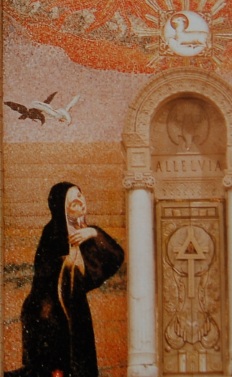






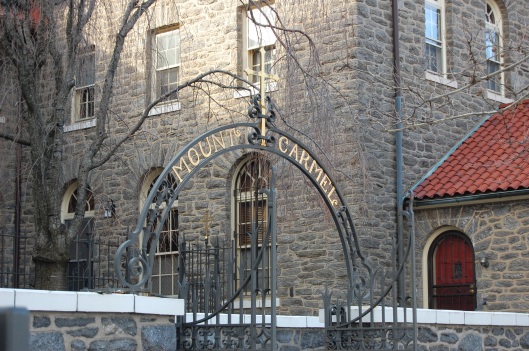


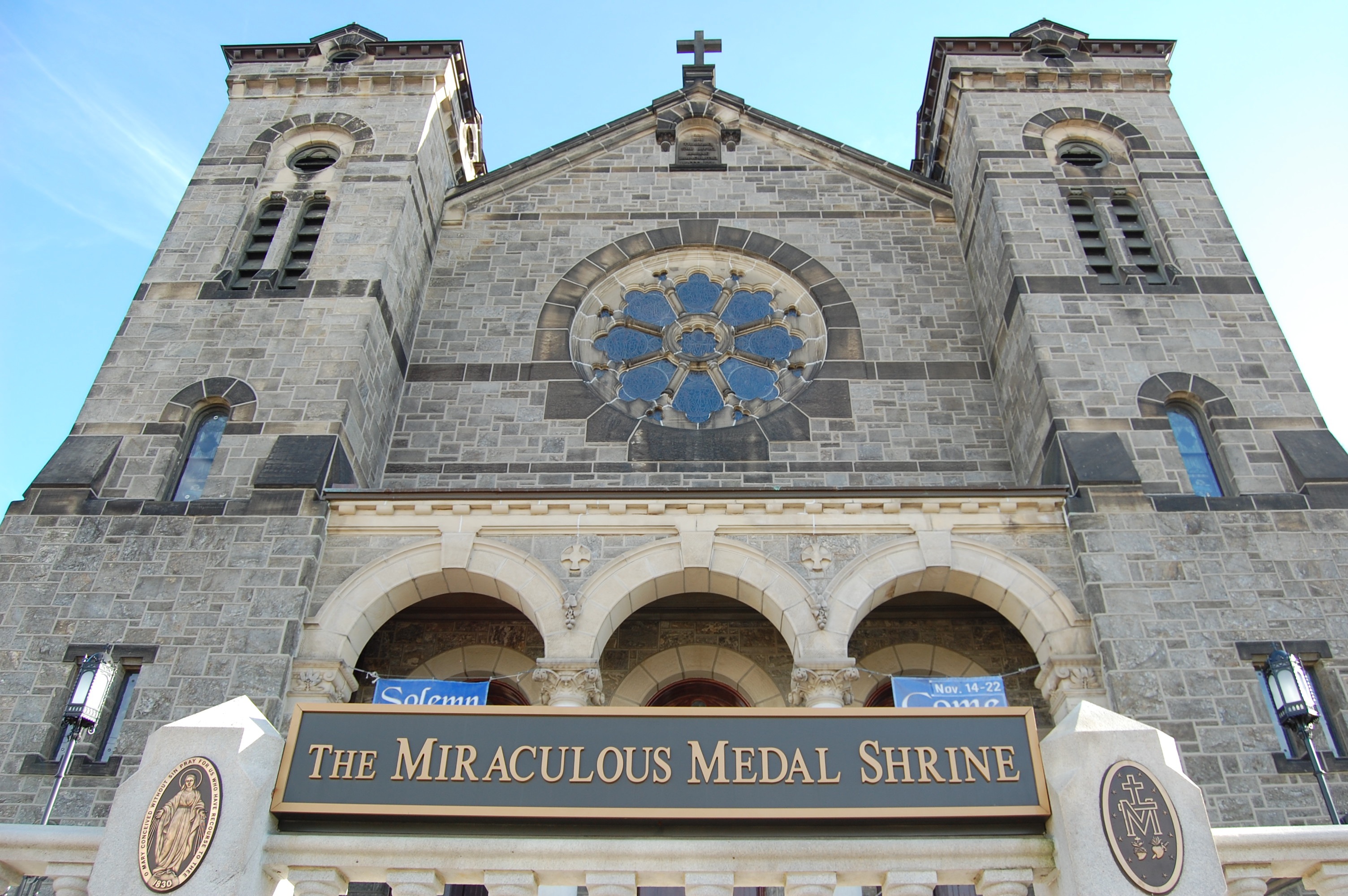




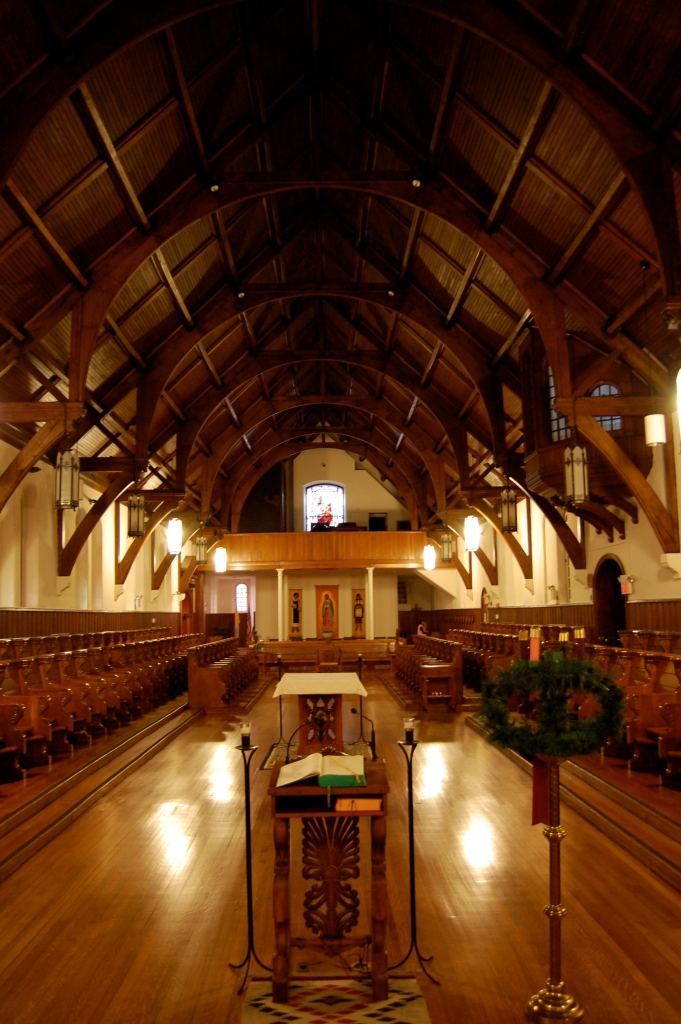
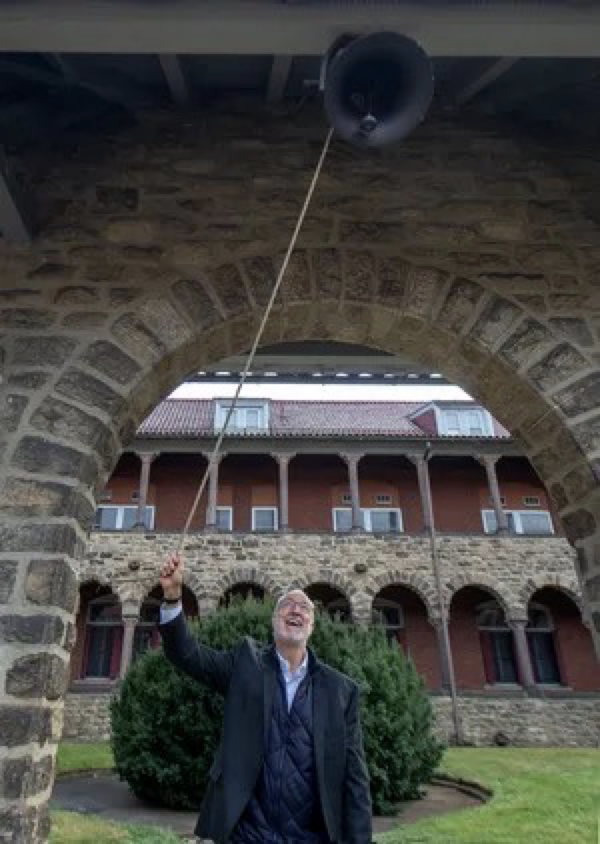



























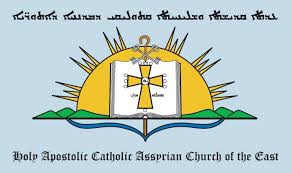
















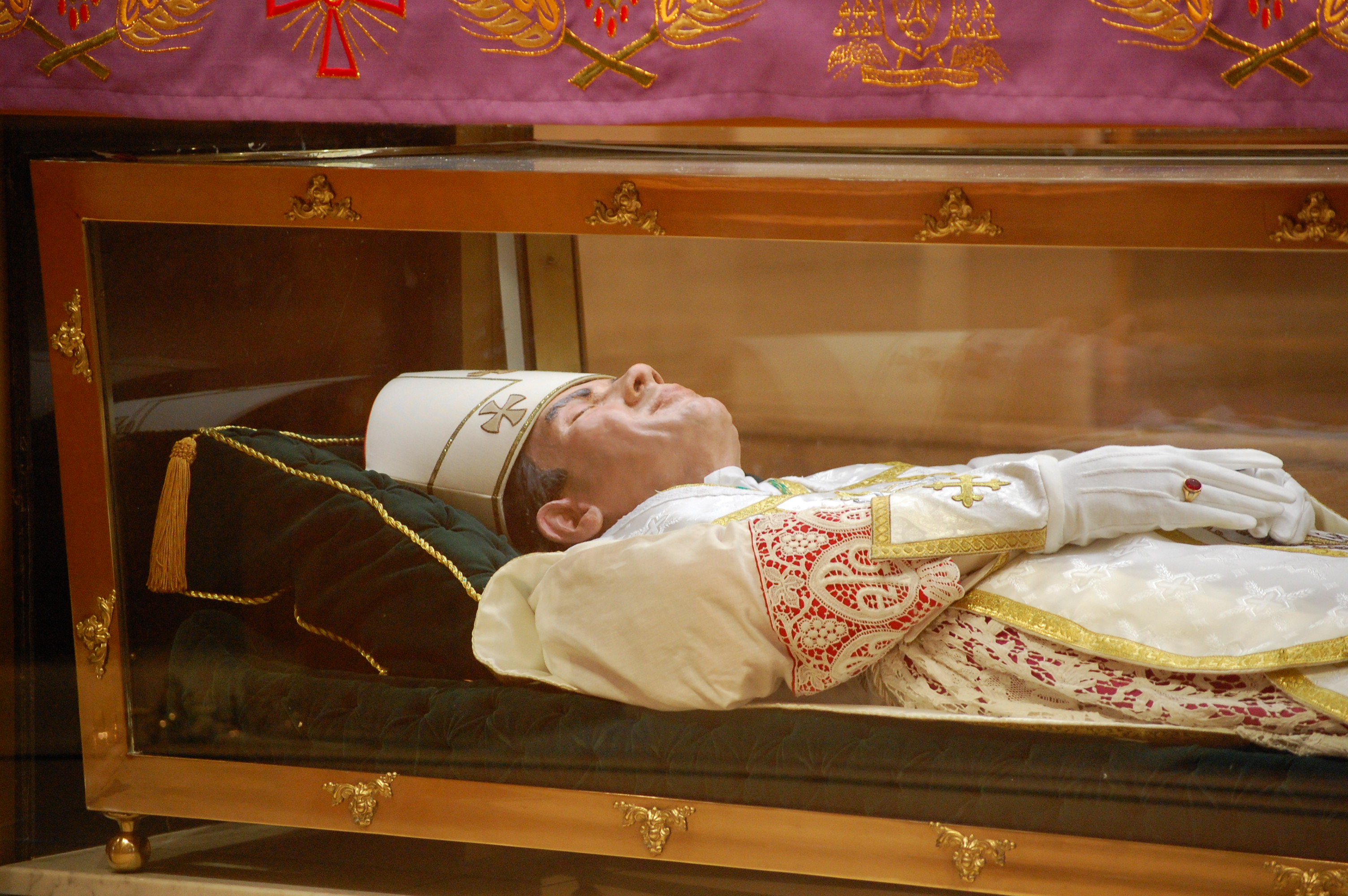



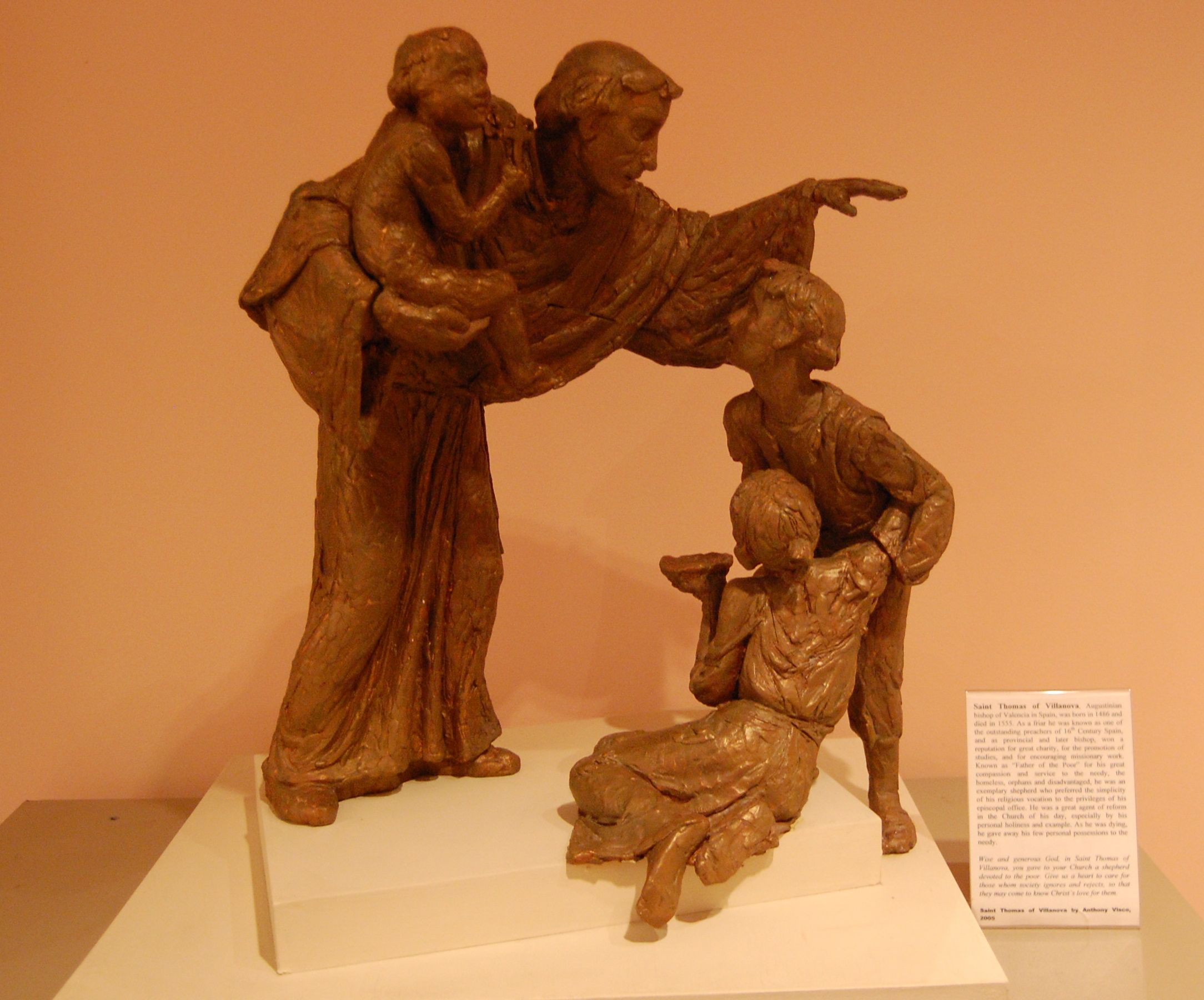
















 Carmelite Monastery of Discalced Nuns, Philadelphia, PA
Carmelite Monastery of Discalced Nuns, Philadelphia, PA
 Saints at the Altar
Saints at the Altar 1902 Hook & Hastings Organ
1902 Hook & Hastings Organ
